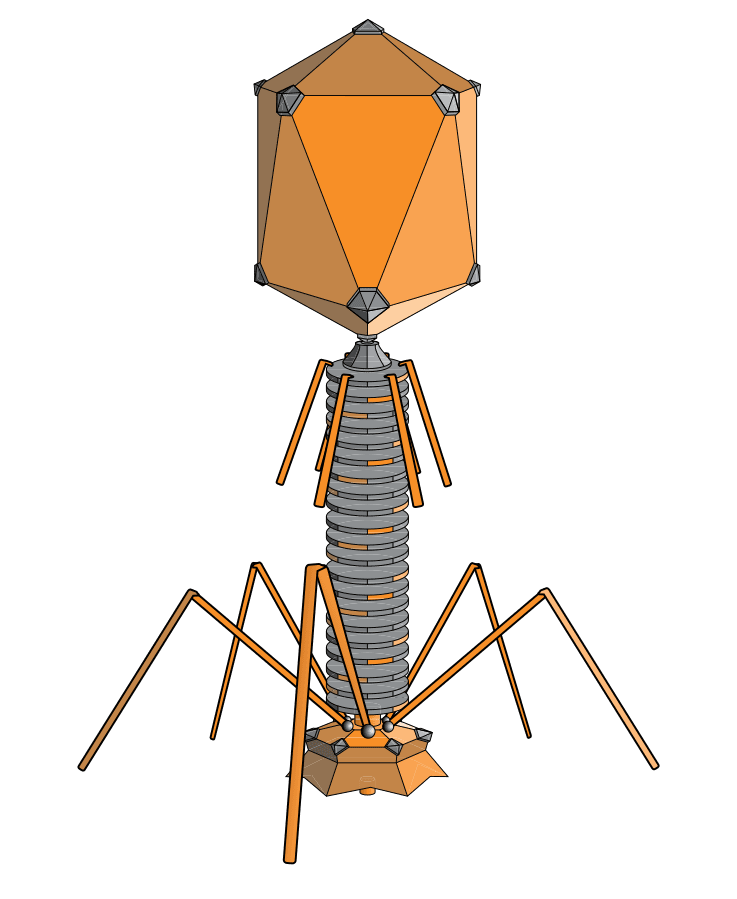Philip Liebson
Chicago, Illinois, United States

In 1859, the French naturalist Jean-Baptiste Lamarck proposed that if an organism is changed by environmental stimuli, these changes would be passed on to offspring. This theory was eventually disproven. One important study disproving this concept led to the Nobel Prize in Physiology or Medicine for Salvador Luria, Max Delbrück, and Alfred Hershey for their work on the replication mechanism and genetic structure of viruses.
Salvador Edward Luria (originally Salvator Luria) was a Jewish scientist who escaped Europe before the Holocaust. He was born in Turin, Italy, in 1908 of a Sephardic Jewish family and studied at the University of Turin. In 1936, he was introduced to Delbrück’s theory of the molecular structure of genes and began to study genetic theory by using viruses that infect bacteria, or bacteriophages. In 1938, he received a fellowship to study in the United States, but could not attend because of Mussolini’s limits on academic fellowships for Jews. Luria left for Paris and in 1940, when Germany invaded France, he fled by bicycle to Marseille and received a visa to the United States.
In the US, he obtained a position at Columbia University thanks to Enrico Fermi. Over the next few years, he began research studies with Delbrück and Hershey at Cold Spring Harbor on Long Island, and at Vanderbilt with Delbrück.
In the early 1940s, he conducted studies with Delbrück, initiated earlier in Rome, which determined that inheritance in bacteria followed Darwinian principles, i.e., was not produced by environmental changes but through mutations associated with changes in genetic material. He discovered that genetic mutations in bacteria could change their response to viruses without the viruses being initially present. In 1943, Luria and Delbrück published a paper demonstrating that bacteria followed Darwinian rather than Lamarckian principles. Their findings were based on the statistical analysis of studies of bacteriophages. Luria also demonstrated that bacterial resistance to viruses was genetically inherited, but resistance of bacteria to antibiotics may occur without the virus being present and as a result of random mutations.
They also determined that when bacteria are infected by viruses, the bacteriophage response to ultraviolet irradiation could be increased or decreased. This was later determined to occur through changes in DNA. Further work along these lines resulted in the Nobel Prize in Physiology or Medicine for Luria, Delbrück, and Hershey. Bacteriophages may be useful in reducing bacterial drug resistance.
While working at the University of Illinois in Champaign-Urbana in the 1950s, Luria and Giuseppe Bertani discovered that bacterial hosts could modify and restrict the activity of invading viruses. Such modifications could also affect the production of phages grown in other strains.
In 1959, Luria became the chair of microbiology at the Massachusetts Institute of Technology (MIT), where he studied the response of bacterial cell membranes to proteins produced by another strain of bacteria, or bacteriocins. He found that these changes affected penetration by bacteriophages, by creating ionic changes across the cell membrane.
Luria was active politically, working with Linus Pauling to protest nuclear weapon testing, and was an opponent of the Vietnam War. He died of a heart attack in 1991.
Resources
- Luria SE, Human ML.”A nonhereditary, host-induced variation of bacterial viruses.” Journal of Bacteriology 1952 Oct; 64 (4):557–69. doi:10.1128/JB.64.4.557-569.1952. PMC 169391. PMID 12999684. www.directessays.com. Archived from the original on 2013-10-15.
- Luria SE. “Mutations of bacteria and bacteriophage.” In Phage and the Origins of Molecular Biology (2007) Edited by John Cairns, Gunther S. Stent, and James D. Watson, Cold Spring Harbor Laboratory of Quantitative Biology, Cold Spring Harbor, Long Island, New York, pgs. 173-179. ISBN 978-0-87969-800-3
PHILIP R. LIEBSON, MD, graduated from Columbia University and the State University of New York Downstate Medical Center. He received his cardiology training at Bellevue Hospital, New York and the New York Hospital Cornell Medical Center, where he also served as faculty for several years. A professor of medicine and preventive medicine, he has been on the faculty of Rush Medical College and Rush University Medical Center since 1972 and holds the McMullan-Eybel Chair of Excellence in Clinical Cardiology.

Leave a Reply